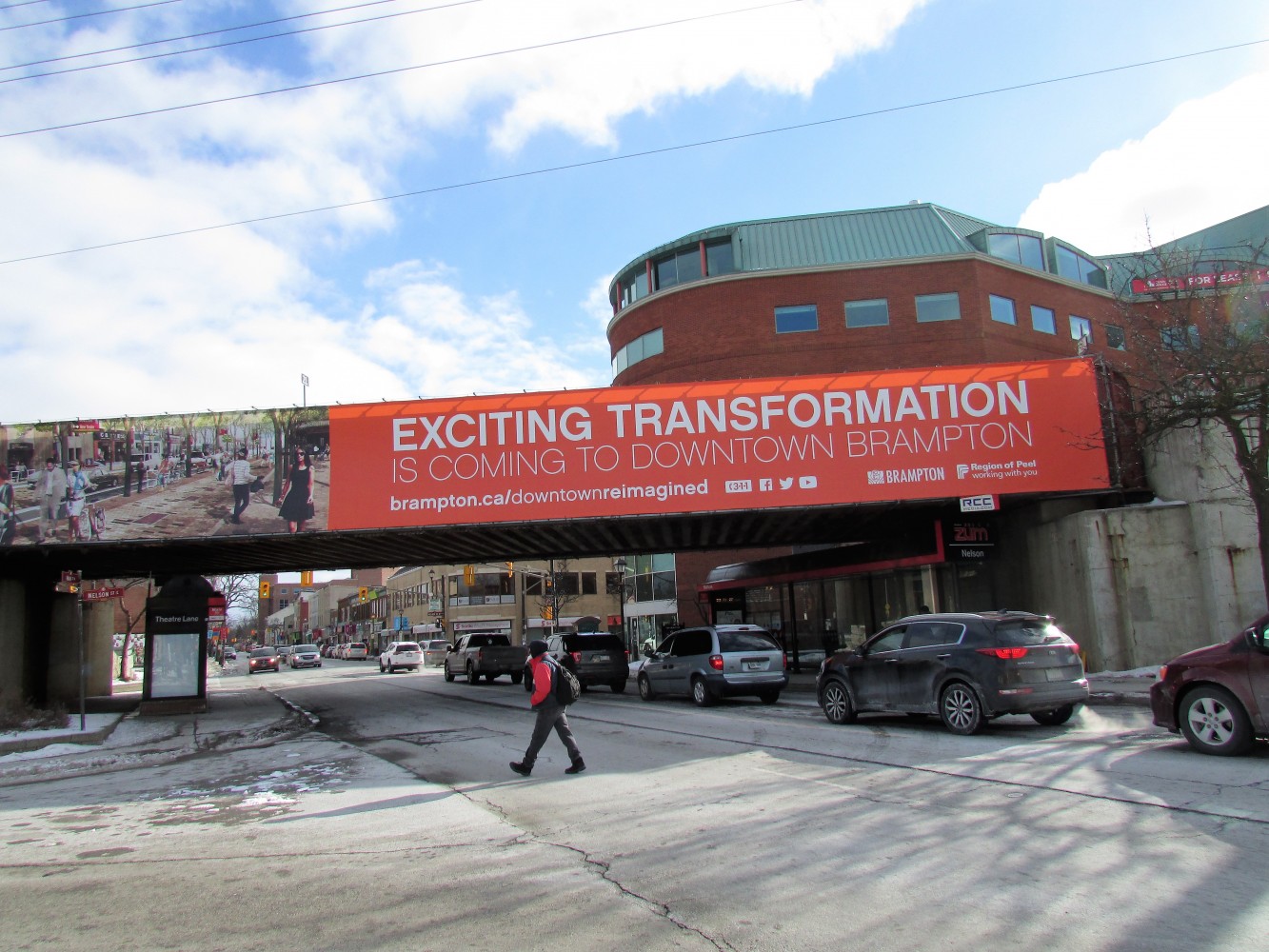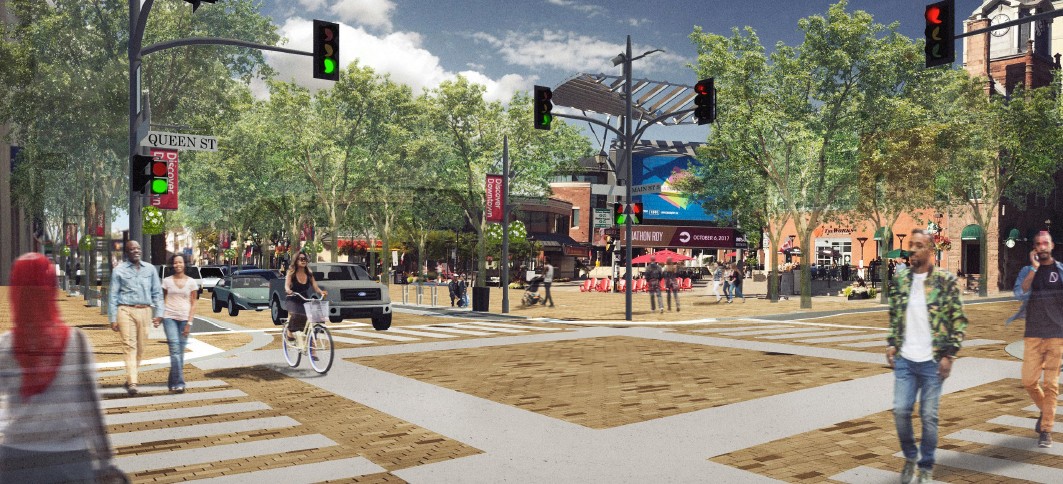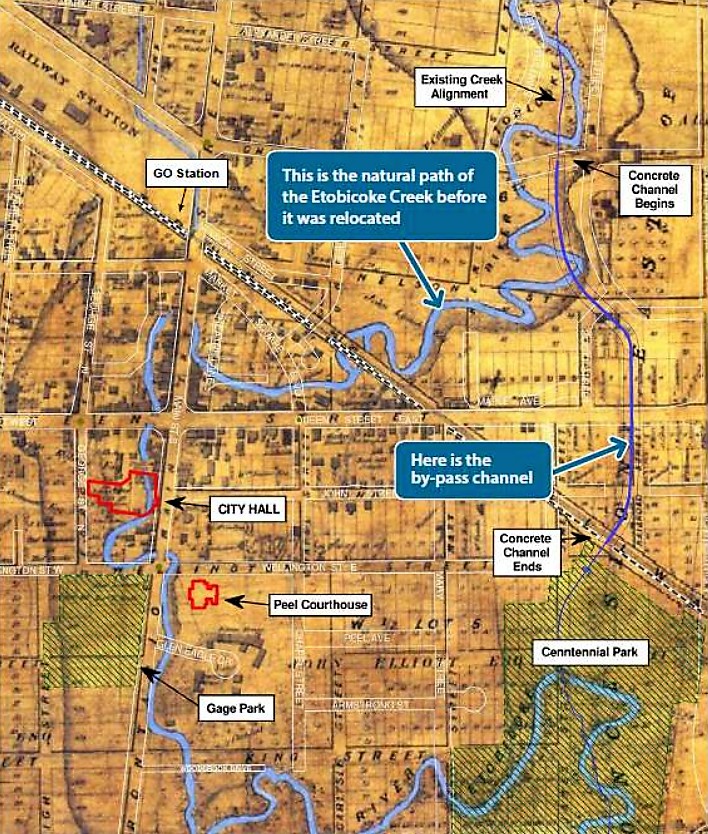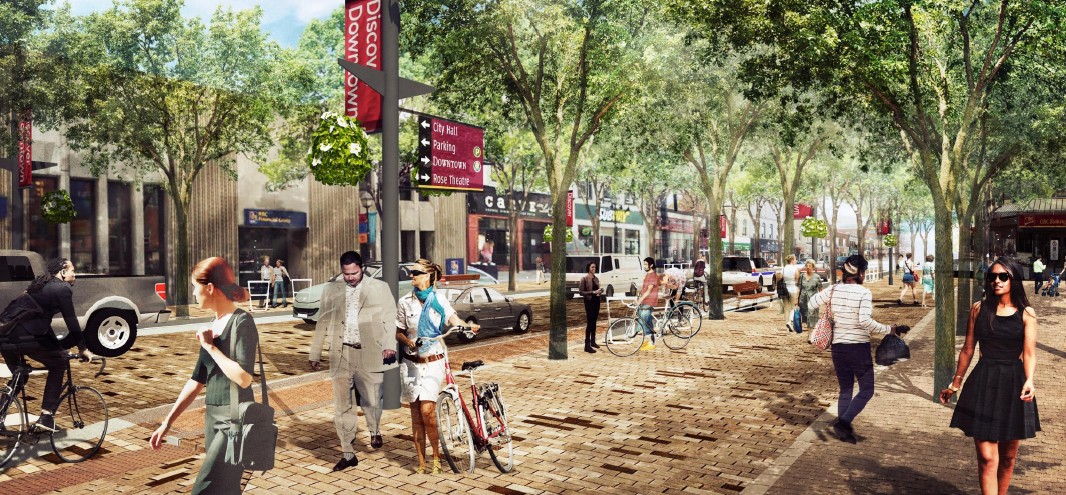
Update: Downtown Reimagined report delayed
There were awards for various visitors to city council chambers Wednesday. Advocates raised awareness about parental alienation, a local wrestling team was also present for a presentation to local legislators and members of the Gujarati community gathered to celebrate the naming of May 1 as Gujarat Day.
But Wednesday’s city council meeting, where the business of moving Brampton forward takes place, was a short one that came and went without receiving the expected report on how to proceed with the “paused” Downtown Reimagined project, a massive undertaking to unlock the potential of the stagnating city-centre.
Staff were supposed to bring recommendations to this meeting, but City Clerk Peter Fay told The Pointer the report has been delayed to May 15 and could be put off even longer.

A Rendering of the Downtown Reimagined plan, which was postponed late last year
The project, to revitalize the entire downtown streetscape while digging up much of the area to repair and replace aging water and sewer lines, was cancelled in December for a variety of reasons, including uncertainties about the cost of dealing with poorly mapped water diversion channels running beneath parts of downtown.
Staff in the city’s Economic Development office told The Pointer during the meeting that more time is needed.
The city has been exploring the decades old underground tunnels, which diverted water beneath the surface, through various means, including penetrating radar, to find out if the planned work could cause any damage to the subterranean structures that wind beneath downtown.

An old map of Brampton shows Etobicoke Creek before much of it was diverted underground through the area
The cancellation late last year came at the request of staff, in part to provide more time and breathing room to not only explore the engineering challenges posed by the underground waterways, but also the changing parameters of the massive project. That month, council had revived the controversial LRT Main Street alignment, for which Mayor Patrick Brown demanded the possibility of a tunnelled alternative. The planned Ryerson University campus, on which the city had pinned hopes for a revitalized downtown, had essentially been cancelled in January when Ryerson withdrew from the campus plan because of the provincial government’s decision to renege on a $90 million funding commitment for the campus made by the previous Liberal government (Ryerson and the city are still moving forward with other major plans to bring post-secondary education and partnerships to the downtown area).
But it was the unknown dynamics of the underground waterways that caused the project’s postponement, which angered Brown when the explanation was given to council shortly after he took office, years after the Downtown Reimagined plan had been approved and promoted widely by the previous council. The mayor questioned how staff could have suddenly been surprised about a possible underground engineering issue and the unknown water channels, when they had at least two years to gather all the information for the previously approved project.

A rendering of the postponed plan
Staff did not provide an answer at the time to explain why the issues never came up previously.
The work to understand the implications of the subsurface waterways added new wrinkles to the planning of Downtown Reimagined even as the cost of the project had soared to $33 million by city estimates. Worse, all the bids coming in response to the region’s tender ranged from $55 million to $73 million, which, under the joint contract with the region, would make the city responsible for $36 million to $45 million of the total. The latter figure would be about twice what the city originally expected to pay. That was without knowing exactly how much it would cost to deal with the channels originally built in the 19th century to divert Etobicoke Creek as it meandered, back then, through the heart of Brampton’s downtown core.
While locals may have found the natural water feature a pleasing fixture, it was a problematic nuisance, as it made what was then a much smaller community prone to flooding. The last flood, in 1948, was particularly devastating and led to not only changes to the creek path but a floodplain designation that has continued to stifle development downtown.
Downtown business owners have told The Pointer that if the work to fix underground infrastructure badly in need of repair or replacement isn’t done soon, there could be catastrophic consequences to the city-centre if a major rupture occurs.
Email: [email protected]
Twitter: @mansoortanweer
Submit a correction about this story


